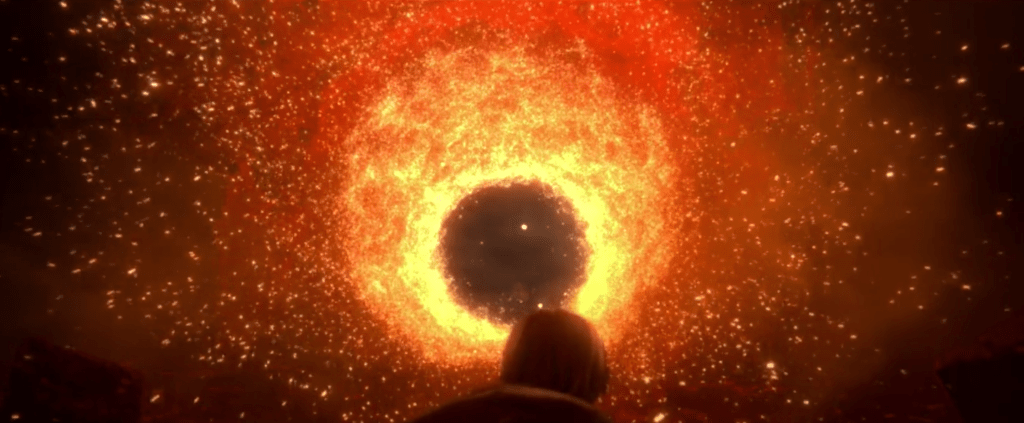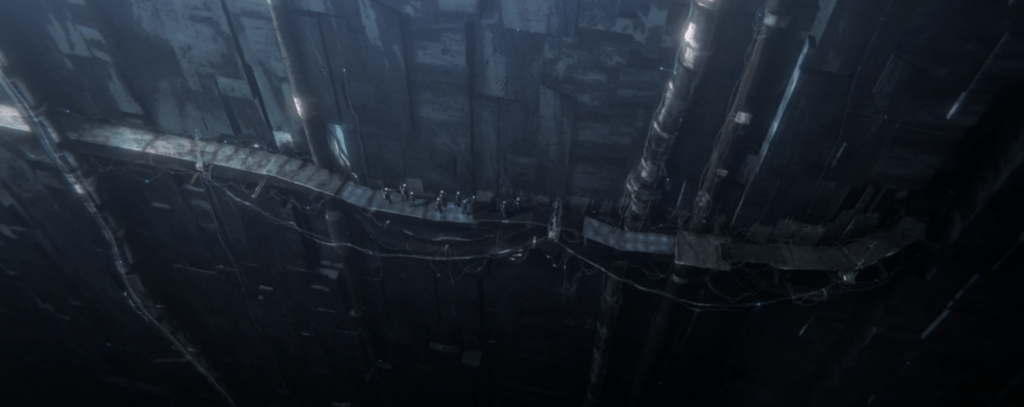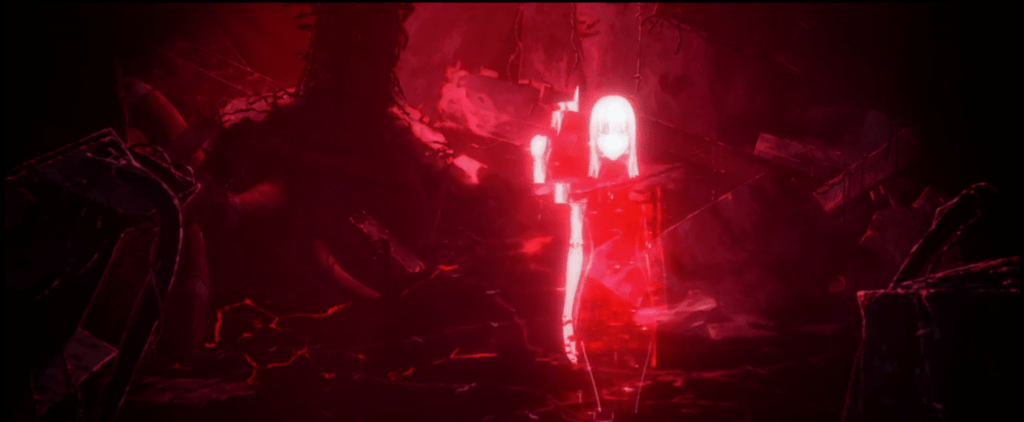P
Paul
Guest
“A Dyson sphere is a hypothetical megastructure that completely encompasses a star and captures most or all of its power output.”
A big part of BLAME!‘s appeal to me has always been the scale of the megastructure in which its story is set. Whole chapters of the original manga depict the main character Killy walking through sterile landscapes, going silently up staircases that stretch miles and miles and take days to climb, coiled around pipes as high as the sky. And yet as high as Killy climbs, there are no clouds for him to reach, just more levels of the artificial megastructure, a Dyson sphere grown out of control over thousands of years and guarded by a deadly artificial intelligence.

Capturing such existential dread was always going to be a tough ask for an anime adaptation, and perhaps wisely, this new Netflix/Polygon Pictures effort mostly eschews dark wanderlust in favour of action. It’s a liberal adaptation, but no doubt about it, this is still the BLAME! I remember.

A place where humanity has lost control of technology and became trapped by it, an ever more relevant, creeping fear in these modern times: the tragedy of BLAME! is that we became unable to turn-off our own building machines, and so they just kept on going, building ever further into space.
Anyway, as a fan of BLAME!, I felt a chill the moment Killy shows up with his gravitational beam emitter (aka gun!) for the first time, leaving literal miles of molten, twisted metal in his wake. The moment that Sanakan reveals herself is also thrilling, taking into account that she’s about to embark on a genocidal rampage! Yet surely Cibo is the highlight, introduced as a half-rotten, long-since discarded cyborg head; her personality brings much colour and hope to an otherwise desperate story.

In many ways, I wish Polygon’s animation was just slightly better. If you’ve seen their work on Knights of Sidonia or Ajin, you will know what I mean. This is fully CG, but given its relative budgetary constraints, it’s less Pixar and more Playstation 2/3, meaning the animation is jarring. Characters lack texture and personality, and at times it’s a challenge to follow the action from scene to scene, which is all a real shame because the megastructure itself is beautifully rendered; decaying and claustrophobic yet vast and sprawling, a place where humanity is dwarfed and vulnerable.

If this film kindles some further interest in BLAME! , then that’s great. In this reviewer’s humble opinion, the manga is fantastic and required reading for anyone that prefers a touch of bitter over sweet, but of course, I’d welcome further anime sequels too. This film is a fine introduction to Tsutomu Nihei’s large and vivid painting of a future out of control.
Continue reading...
